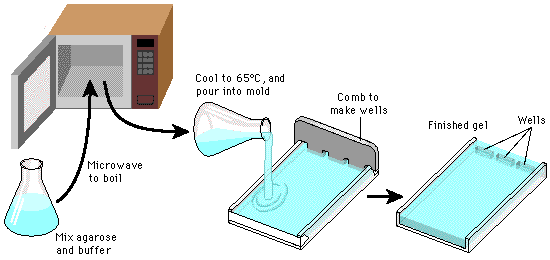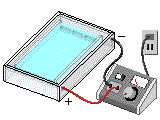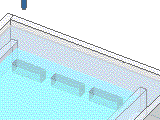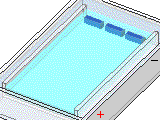
Electrophoresis
This assignment involved the scientific procedure of gel electrophoresis. Gel electrophoresis is a laboratory method used to separate mixtures of DNA, RNA, or proteins according to molecular size. In this process, the molecules will be separated by an electrical field through a gel that contains small pores. The molecules travel through the pores in the gel at a speed that is inversely related to their lengths; meaning small DNA molecules will travel a greater distance through the gel than a larger DNA molecule. The importance of the assignment was to predict tasting ability and to determine if this trait was recessive to the class and my group population. The main procedures of this lab were to isolate genomic DNA, amplify the gene by using a polymerase chain reaction (PCR), which is a technique used to amplify a specific sequence of DNA, and digest the PCR product with the restriction enzyme HaeIII and then analyzed the data using gel electrophoresis process.
 |  |
|---|---|
 |  |
 |
Control
Deprivation
Restoration


Depletion of DedD from FtsN cells results in the formation of very long, mostly nonseptate filaments.
Microscope
This was an assignment given to me by my investigation & research professor. Me and my partner were to analyze specific proteins under certain conditions:
FtsN is a protein that is essential for cell division; it activates septal peptidoglycan synthesis and is part of the constriction of the cell wall. There are 3 other proteins that are FtsN-like: DamX, RlpA, and DedD. For this assignment the professor chose the protein DedD for us to study. DedD is a septum binding protein that is believed to be as essential as FtsN in cell division. Thus, because of this known information, two experimental questions were considered; Is FtsN essential for growth and coccobacillus morphology at low temperatures (10ºC)? and Can the overproduction of DedD substitute for FtsN at low temperatures(10ºC)?